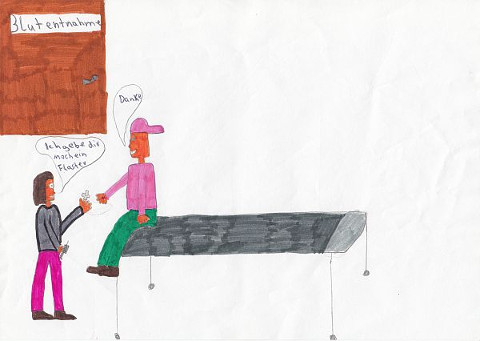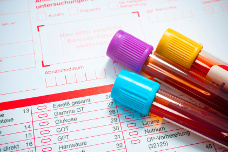The taking of blood from a child's view
Taking of blood samples
Author: PD Dr. med. Gesche Tallen, erstellt am: 2009/10/29, Editor: Maria Yiallouros, Reviewer: Prof. Dr. med. Dr. h. c. Günter. Henze, English Translation: Hannah McRae, Last modification: 2015/04/22
Blood tests are regularly carried out in children or adolescents with cancer. Blood samples are mainly obtained through the puncture of a vein, or, less commonly, of an artery or capillary.
- Venipuncture: For both blood tests and the administration of cancer treatment, frequent venipunctures are necessary. This can cause pain and inflammation. To ensure a safe and long-term venous access, as well as fear- and pain-free blood tests, the doctors will recommend the insertion of a central venous catheter at the beginning of treatment (for example a Broviac catheter).
- Capillary puncture: For patients who do not have such a permanent catheter, most blood samples are taken by a tiny puncture of a capillary on the finger tip, or a vein on back of the hand or in the elbow after application of an anesthetic cream or pad to reduce pain.
- Arterial puncture: In order to assess the blood gases (blood gas analysis, BGA), blood is usually taken by puncturing an artery in the wrist.

For the diagnosis and staging of many cancers (for example leukaemias), the collection of bone marrow is also necessary. Here you will find more information on how bone marrow can be collected.

